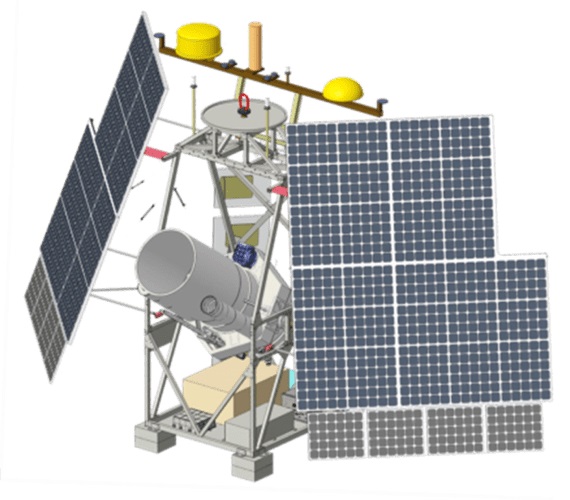Het NASA GUSTO project heeft haar Payload Preliminary Design Review succesvol doorstaan. SRON ontwerpt drie detector arrays en een 4,7 terahertz lokale oscillator.

GUSTO is een ballontelescoop die ruim honderd dagen door de aardatmosfeer zal rondzweven, op de grens van de ruimte op 36 kilometer hoogte. Het project startte in februari 2018 en de ballon wordt volgens planning in december 2021 opgelaten vanaf Antarctica. Het zwevende observatorium bevat drie ontvangers voor elektromagnetische straling van 1,4, 1,9 en 4,7 terahertz om respectievelijk NI, CII en OI emissielijnen te meten in het spectrum van het interstellaire medium. Dit helpt wetenschappers om de levenscyclus te bepalen van interstellair gas in onze Melkweg, de formatie en ontmanteling te zien van stervormingswolken en de dynamiek en gasstromen te begrijpen dichtbij het centrum van ons sterrenstelsel.
SRON levert drie Hot Electron Bolometer arrays met elk acht pixels en een 4,7 terahertz lokale oscillator op basis van een quantum cascade laser en een fasetralie. De review-bijeenkomst was georganiseerd op de Universiteit van Arizona in Tucson. Jose Silva, Wouter Laauwen en Jian-Rong Gao waren aanwezig namens SRON en TU Delft.
—————————————————————————-
—————————————————————————-
GUSTO mission passes important milestone
The NASA GUSTO project has successfully passed its Payload Preliminary Design Review. SRON designs three detector arrays and a 4.7 THz local oscillator.
GUSTO is a balloon borne terahertz observatory that will drift in the Earth’s atmosphere for over a hundred days, on the edge of space at 36 km altitude. The project was kicked off on February 2018 and the balloon is scheduled to be launched on Antarctica in December 2021. It contains three receivers for electromagnetic radiation of 1.4, 1.9, and 4.7 terahertz to map respectively NI, CII, and OI emission lines in the spectrum of the interstellar medium. This helps scientists to determine the life cycle of interstellar gas in our Milky Way galaxy, witness the formation and destruction of star-forming clouds, and understand the dynamics and gas flow in the vicinity of the center of our galaxy.
SRON contributes three Hot Electron Bolometer arrays with eight pixels each and a 4.7 THz local oscillator based on a quantum cascade laser and a phase grating. The review meeting was organized at the University of Arizona in Tucson. Jose Silva, Wouter Laauwen and Jian-Rong Gao attended the meeting on behalf of SRON and TU Delft.


